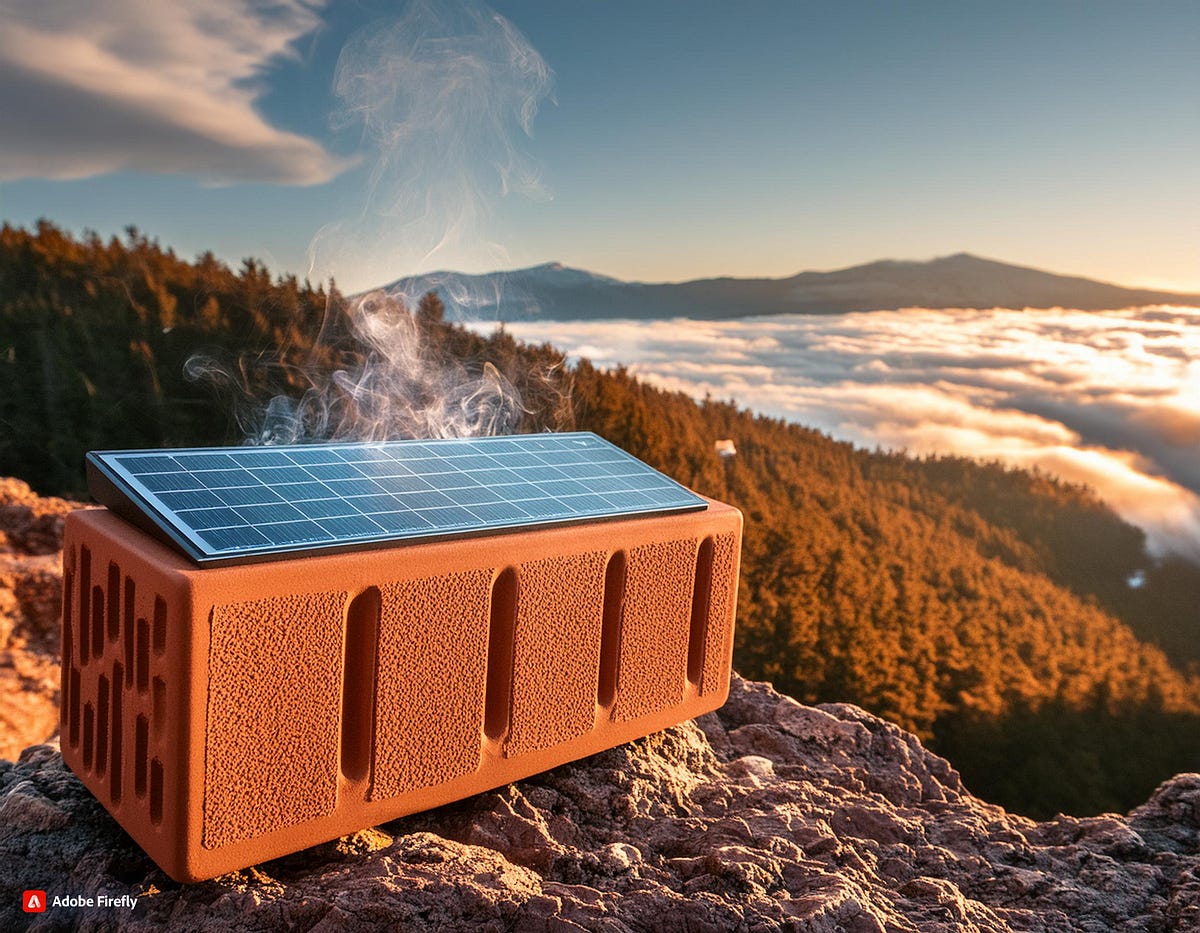Storing Renewable Energy in Bricks: A Promising Solution to the Intermittency Challenge
Kernekoncepter
Storing renewable energy in bricks can provide a viable solution to the intermittency challenge faced by renewable energy sources.
Resumé
The content discusses the issue of intermittency in renewable energy generation and how storing renewable energy in bricks could be a promising solution.
The key highlights are:
- Renewable energy is now cheaper than fossil fuel-generated energy in some regions, but its intermittency remains a vital issue.
- When renewable energy cannot be delivered to consumers, carbon-intensive gas stations must be turned up to compensate for the shortage, leading to a double-whammy for the climate.
- In 2020 and 2021, 5.8TWh of wind generation was curtailed in Great Britain due to system constraints, enough to power 800,000 homes.
- Storing renewable energy in bricks, known as "superhot brick batteries", could provide a solution to the intermittency challenge.
Tilpas resumé
Genskriv med AI
Generer citater
Oversæt kilde
Til et andet sprog
Generer mindmap
fra kildeindhold
Besøg kilde
medium.com
How To Store Renewable Energy in Bricks
Statistik
5.8TWh of wind generation was curtailed in Great Britain due to system constraints across 2020 and 2021, enough to power 800,000 homes.
Citater
"To put how wasteful renewable energy is in perspective, 5.8TWh of wind generation was curtailed in Great Britain due to system constraints across 2020 and 2021—enough to power 800,000 homes."
Vigtigste indsigter udtrukket fra
by Venus Lee kl. medium.com 07-15-2024
https://medium.com/the-new-climate/how-to-store-renewable-energy-in-bricks-eaab5819e1d3
Dybere Forespørgsler
What are the technical and economic feasibility considerations for implementing "superhot brick batteries" on a large scale?
The technical feasibility of implementing "superhot brick batteries" on a large scale involves considerations such as the efficiency of energy storage, the scalability of the technology, and the ability to integrate it with existing renewable energy systems. The bricks need to be able to store energy efficiently, release it when needed, and withstand repeated charging and discharging cycles without significant degradation. Additionally, the manufacturing process should be cost-effective and environmentally friendly to ensure economic feasibility.
From an economic perspective, factors such as the initial investment cost, operational expenses, and potential revenue streams need to be evaluated. The cost of materials, production, installation, and maintenance should be competitive with other energy storage technologies to make "superhot brick batteries" a viable option for large-scale deployment. Furthermore, incentives, subsidies, and regulatory frameworks can play a crucial role in promoting the adoption of this technology and driving down costs.
What are the potential drawbacks or limitations of using bricks as an energy storage medium compared to other emerging technologies?
While using bricks as an energy storage medium has its advantages, there are also potential drawbacks and limitations to consider. One limitation is the energy density of brick-based storage systems, which may be lower compared to other emerging technologies like lithium-ion batteries or pumped hydro storage. This could result in the need for a larger physical footprint to store the same amount of energy, making it less suitable for urban areas with limited space.
Another drawback is the thermal conductivity of bricks, which could affect the efficiency of energy storage and discharge processes. Heat loss during storage and release could reduce overall system efficiency and increase energy costs. Additionally, the weight and structural requirements of brick-based storage systems may pose challenges in terms of installation and integration with existing infrastructure.
How could the integration of renewable energy storage solutions like "superhot brick batteries" with smart grid technologies and demand-side management strategies further improve the reliability and efficiency of renewable energy systems?
Integrating renewable energy storage solutions like "superhot brick batteries" with smart grid technologies and demand-side management strategies can significantly enhance the reliability and efficiency of renewable energy systems. Smart grid technologies enable real-time monitoring, control, and optimization of energy flows, allowing for better coordination between energy generation, storage, and consumption.
By integrating "superhot brick batteries" with smart grid systems, operators can optimize energy storage and discharge schedules based on demand patterns, weather forecasts, and market prices. This dynamic control helps balance supply and demand, reduce energy wastage, and minimize the need for backup fossil fuel-based generation. Demand-side management strategies, such as load shifting and peak shaving, can further improve system efficiency by incentivizing consumers to adjust their energy consumption patterns.
Overall, the integration of renewable energy storage solutions with smart grid technologies and demand-side management strategies creates a more flexible, resilient, and sustainable energy system that can better accommodate the variability of renewable energy sources.
0
